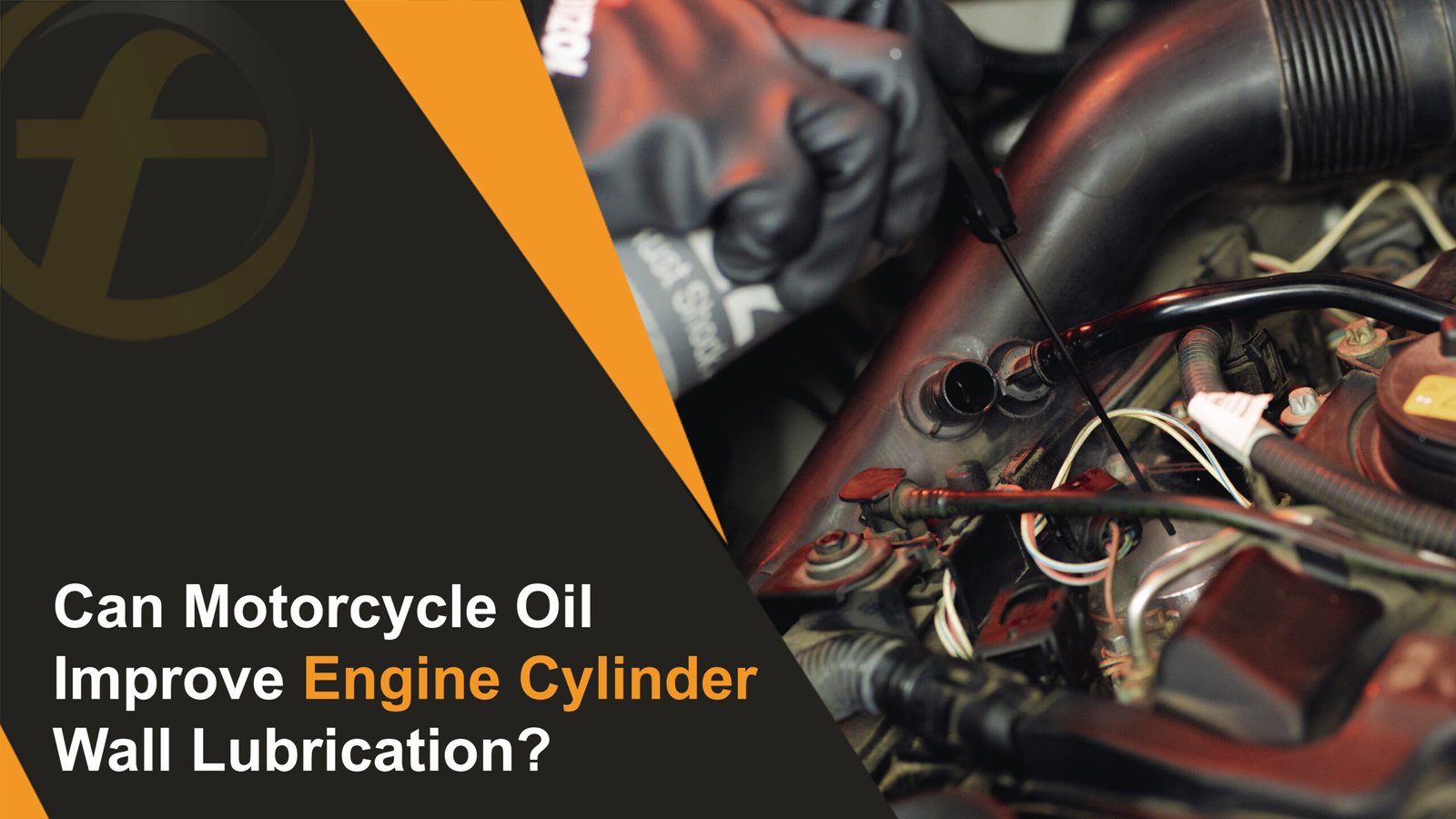
Motorcycle engine oil plays a significant role in ensuring your bike’s engine runs smoothly and lasts longer. It helps in several essential ways, such as reducing friction, cooling the engine, and preventing rust. However, one question many motorcycle owners ask is: Can motorcycle oil also help improve the lubrication of the engine cylinder wall?
The engine cylinder wall is a crucial part of your bike, and keeping it lubricated is key to ensuring your engine stays in good condition. In this article, we will explore the different types of engine oils and how they impact engine lubrication, especially regarding the engine cylinder wall. Let’s examine how the right oil can help your motorcycle run better and last longer.
The Role of Engine Oil
Engine oil helps keep the engine running well. Here’s what it does:
Lubrication
Oil creates a thin layer between moving engine parts to help them slide smoothly and stop them from wearing out.
Sealing
It fills the space between the piston and the cylinder, keeping the engine’s power strong.
Cooling
Oil helps cool the engine by absorbing heat from the engine parts and preventing them from getting too hot.
Cleaning
It keeps the engine clean by picking up dirt and taking it away.
Preventing Rust
Oil stops the engine from rusting or getting damaged by corrosion.
Operating Function
Oil also helps certain parts, like VTEC systems, work properly.
As you can see, engine oil does a lot of essential jobs you can’t always see. The oil in your motorcycle gets used up over time as you ride. This happens because some oil burns with the fuel and comes out with the exhaust. Even though it burns slowly, how you ride can use it up faster. If the oil gets too low, your engine might get damaged, so you should check it regularly.
Engine oil gets worse as you use your vehicle. This happens because of gases from the engine, soot, and dust. But it’s not just about how many miles you drive. How you drive, and the environment you drive in can also affect the oil. Since it’s hard to know when the oil is too worn out, oil change times are based on typical usage to help prevent problems.
Types Of Engine Lubrication
Let’s learn how motorcycle lubrication works. There are three types of lubrication:
Full Film Lubrication
This is when a thick layer of oil entirely separates two metal parts in the engine. The oil sticks to the moving parts and gets pulled between them, like between the crank and rod bearings or between the piston and cylinder wall. The oil thickness matters—if it’s too thin, it will squeeze out, and if it’s too thick, the engine parts move slower and use more oil.
Boundary Lubrication
This happens when the oil pump isn’t working well, or the engine is running at low speeds and high loads. Special additives form a thin protective layer on metal parts like gears and bearings. This layer keeps the parts safe from damage until the oil returns to normal.
Mixed Lubrication
Mixed lubrication happens when the entire film and boundary lubrication are used together. It occurs when the engine runs at low speeds, and the oil pressure is lower.
Types Of Motorcycle Engine Oil
Motorcycle engine oils are made of base oils and additives. Based on base oil, there are three types of engine oil: synthetic, semi-synthetic, and mineral.
Mineral-Based Motorcycle Oils
Mineral oils come from natural petroleum and are cleaned during the process. They are cheaper than synthetic oils but don’t work as well. They move slower through the engine, which can use more fuel and affect performance. They also don’t handle heat and harsh conditions well, so they are better for older bikes or smaller engines. Plus, they need to be changed more often than synthetic oils.
Semi-Synthetic Oil
If you want an oil that works better in cold weather and stops rust but doesn’t want to spend too much, semi-synthetic oil is a good choice.
It mixes regular and synthetic mineral oil, also called part-synthetic or synthetic blend oil. Semi-synthetic oil gives better protection than regular oil but costs less than fully synthetic oil. It also has unique ingredients that make the oil work better and last longer.
Synthetic-Based Engine Oils
Synthetic oils are made in a lab and are different from regular oils. They are great for newer motorcycles or bikes with more significant engines (over 200cc).
Synthetic oils offer excellent protection, especially for bikes that work hard. They help with:
- Stopping rust
- Reducing friction
- Cooling the engine better
- Lasting longer before you need to change it
- Using less fuel
- Reducing pollution
Synthetic oils are more expensive, but they last longer and help your engine perform better, so they’re worth the money for high-performance bikes.
2-Stroke And 4-Stroke Engine Oils
Motorcycles and scooters have two types of engines: two-stroke (2T) and four-stroke (4T). The difference is in how the engine works.
Two-Stroke Motorcycle Oil
Two-stroke engines make power every two times the piston moves. They are lighter and cheaper but use more fuel, are louder, and create more pollution. These engines are usually found in small vehicles like mopeds and go-carts.
Two-stroke engines need 2T oil. The oil can be made from castor, petroleum, semi-synthetic, or synthetic. Modern two-stroke engines use synthetic oil because it works better and pollutes less.
Bottom Line: Can Motorcycle Oil Improve Engine Cylinder Wall Lubrication?
In conclusion, using the right motorcycle oil is essential for keeping your bike’s engine running smoothly and for protecting the engine’s parts, including the engine cylinder wall. Whether you choose mineral, semi-synthetic, or synthetic oils, each type offers its benefits for lubrication and protection.
Regular oil changes and selecting the right oil for your bike’s needs can prevent wear and tear, improve performance, and extend the life of your engine. By understanding how oil works in your motorcycle, you can make smarter choices to keep your bike in great shape for many future rides.
Want to keep your motorcycle engine running smoothly? Trust Fubex Lubricants & Grease Manufacturers Dubai for high-quality engine oils that protect, lubricate, and improve performance.
FAQs
Q1: What should I do if I accidentally overfill motorcycle engine oil?
Ans: If you put too much oil in your motorcycle, the safest way to fix it is by draining some out using the drain plug until the oil level is correct. Ensure the engine is cool to avoid getting burned, and unscrew the drain plug a little bit at first so you don’t drain too much oil.
Q2: How does motorcycle engine oil affect engine wear?
Ans: Motorcycle engine oil helps reduce friction, protect metal parts, and seal the engine. But if the oil is old or not good enough, it can worsen friction and cause more wear on the engine.

Editor-at-Large
A passionate writer in the lubricant industry, Awais Iqbal has been covering oils, greases, and industrial fluids since the start of his career. At 25, he’s already written for blogs, catalogs, and brand guides across the UAE. Awais’s insights help companies connect with their audience, and his clear, helpful writing style is trusted by brands in the region.


